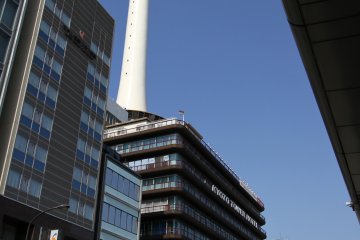
Menara Kyoto
Xia Fei ChiewBerjarak dekat dari stasiun Kyoto, ini adalah apa yang dapat Anda harapkan dari Menara Kyoto

Kyoto Tower is an observation tower located in Kyoto, Japan. The steel tower is the tallest structure in Kyoto with its observation deck at 100 metres and its spire at 131 metres. The 800-ton tower stands atop a 9-story building, which houses a 3-star hotel and several stores. [Wikipedia]

Berjarak dekat dari stasiun Kyoto, ini adalah apa yang dapat Anda harapkan dari Menara Kyoto
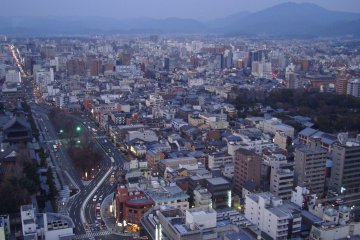
Kyoto sebagai kota budaya seringkali menolak bangunan dengan arsitektur yang modern dan pembangunan Menara Kyoto sendiri merupakan bagian dari penolakan tersebut, akan tetapi pada akhirnya dapat diselesaikan dan resmi dibuka untuk umum pada tahun 1964. Di desain menyerupai Lilin Jepang, Menara Kyoto merupakan menara observasi yang berada tepat di seberang stasiun JR Kyoto. Jangan pernah melewati pemandangan dari atas kota Kyoto, dilengkapi dengan teropong yang dapat membawa kalian menikmati keindahan kota ini, yang begitu kaya dengan budaya.
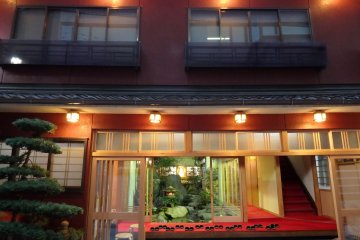
Tiga menit saja dengan berjalan kaki dari Kyoto Station, Nishikiro Ryokan adalah penginapan yang sederhana, bersih, dengan pemilik dan pengelola yang ramah. Sangat cocok untuk pelancong dengan budget terbatas yang mengininkan pengalaman otentik khas Jepang
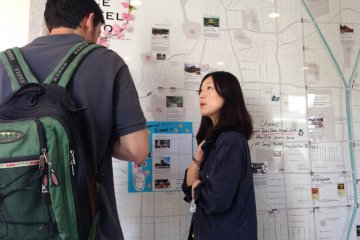
Sebenarnya hostel ini tak memiliki suasana ruko tradisional di Kyoto. Tak ada gorden noren berwarna ala matcha/teh hijau atau tak tercium wangi segar lantai tatami, karakteristik yang lebih terdapat pada Roujiya Guesthouse atau ruangan di Hostel Hana. Namun Piece Hotel lebih memiliki sebuah atmosfer layaknya hostel, dengan warna minimalis dan tembok beton dengan galeri seni kontemporer, sedikit lebih mirip campuran Khaosan Hostel dan Hotel Anteroom

Dengan dua fitur terbaru: Lantai Premium dan restoran istimewa.
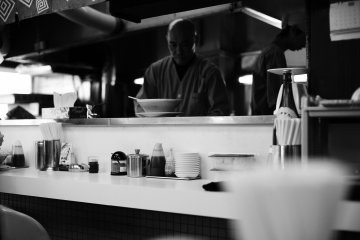
Dai-Ichi Asahi Ramen adalah ramen bergaya Kyoto terkenal yang berlokasi di dekat stasiun Kyoto. Restoran ini dikenal dengan shoyunya . Dikarenakan ketenarannya, bersiaplah untuk mengantri. Untuk harganya masih terjangkau dan semangkuk menu ramen andalan dipatok dengan harga 800 Yen.

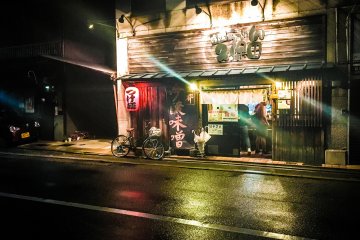
Setelah membaca banyak ulasan positif tentang Ginjo Ramen Kubota di Shimogyoko, Kyoto, saya memutuskan bahwa sudah waktunya untuk mencoba ramen pertama saya di restoran lokal dan otentik yang memiliki spesialisasi miso ramen ini.
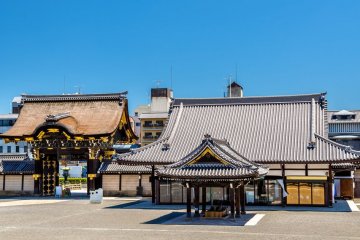
Nishi Hongan-ji is a large Buddhist temple west of Kyoto train station. Together with Higashi Hongan-ji, together with Nishi Hongan-ji, it is one of the two temple complexes of Shin Buddhism in Kyoto. It currently also serves as the main temple of the Jodo -Shin sect, one of the largest Buddhist sects in Japan with over 10,000 sub-temples across the country and 200 temples overseas. Built in 1591 by Toyotomi Hideyoshi, the building is a great example of the architecture of the Momoyama Period and the Early Edo Period. The two largest structures by Nishi Hongan-ji are the Goeido Hall, the largest wooden structure in Kyoto, and the Amidado Hall. Nishi Hongan-ji is also one of the 17 UNESCO World Heritage Sites in Kyoto. A small Japanese garden called Shoseien is a few blocks east of Higashi Hongan-ji. Nowadays the garden with its pond and the particularly beautiful autumn colors is open to the public.

The Kamo River (鴨川), meaning “duck river,” is a prominent and scenic waterway flowing through Kyoto Prefecture, Japan. It has long been a cultural and natural landmark of the city, offering beautiful scenery and a peaceful atmosphere throughout the seasons. The riverbanks are especially popular with locals and tourists alike, who come to enjoy leisurely walks, picnics, and the seasonal beauty of cherry blossoms in spring or the cool breezes in fall. In the warmer months, many riverside restaurants open special balconies known as noryo-yuka, allowing diners to enjoy their meals with a view of the flowing river. Walkways run alongside much of the river’s course, and several spots feature stepping stones that allow pedestrians to cross on foot. Historically, the Kamo River has played a significant role in Kyoto’s development. When the Heian Capital (modern-day Kyoto) was established in the late 8th century, the river’s course was redirected to flow east of the new palace. Despite this effort, the river was prone to flooding, which became a recurring problem for the ancient capital. Emperor Shirakawa famously lamented that three things were beyond his control: the armed monks of Enryaku-ji, dice, and the waters of the Kamo River. Today, the river is more regulated, with reinforced banks and drainage systems. Parallel to it runs the Takase River, a canal constructed by merchant Suminokura Ryoi in the early 17th century to facilitate transportation and reduce reliance on the unpredictable main river. The Kamo River is also culturally significant, flowing past two important Shinto shrines—Kamigamo and Shimogamo—and through the sacred forest of Tadasu-no-mori that lies between them.
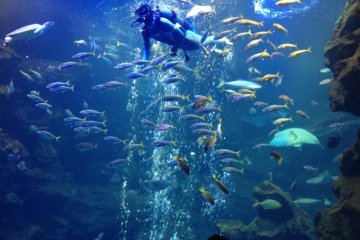
Kyoto Aquarium is located on the edge of Umekoji Park near Kyoto Station. The aquarium features 9 zones including penguins, seals and dolphin shows.